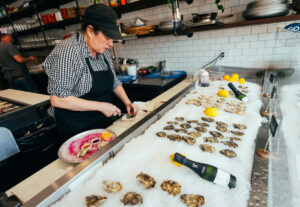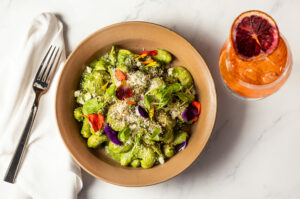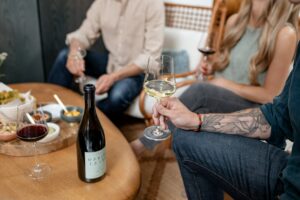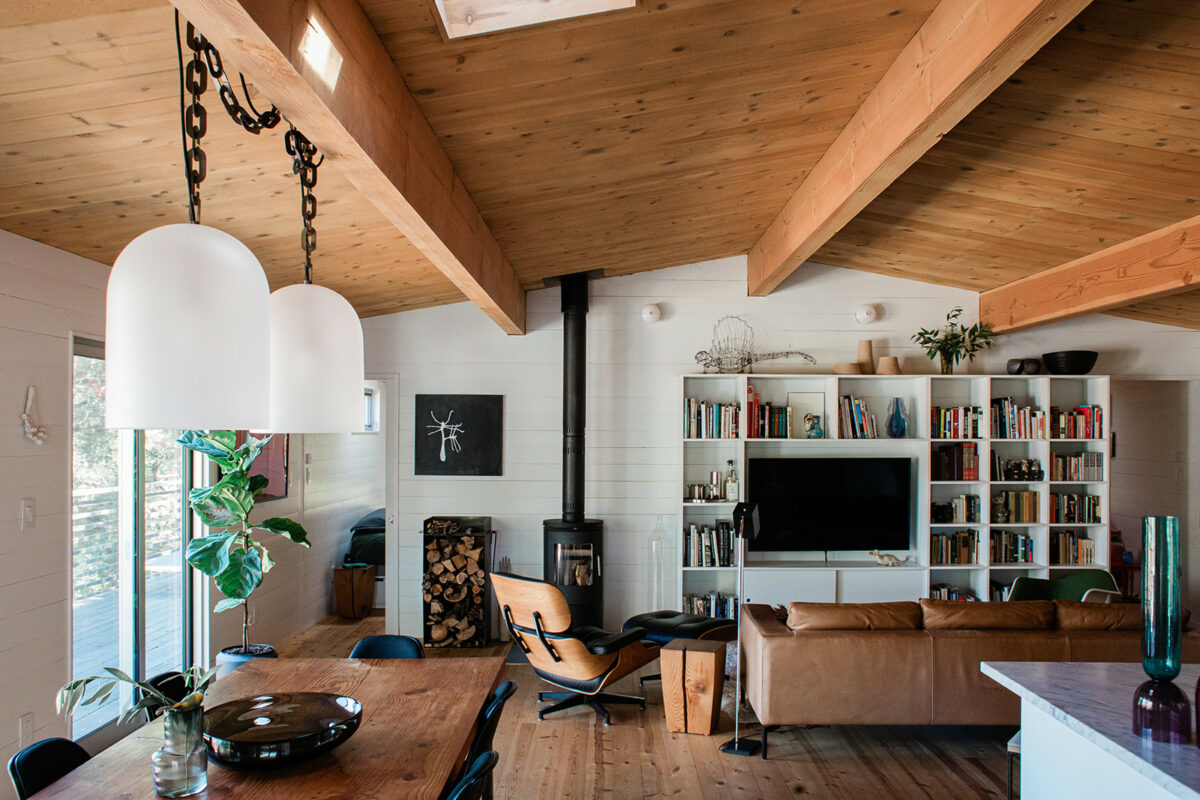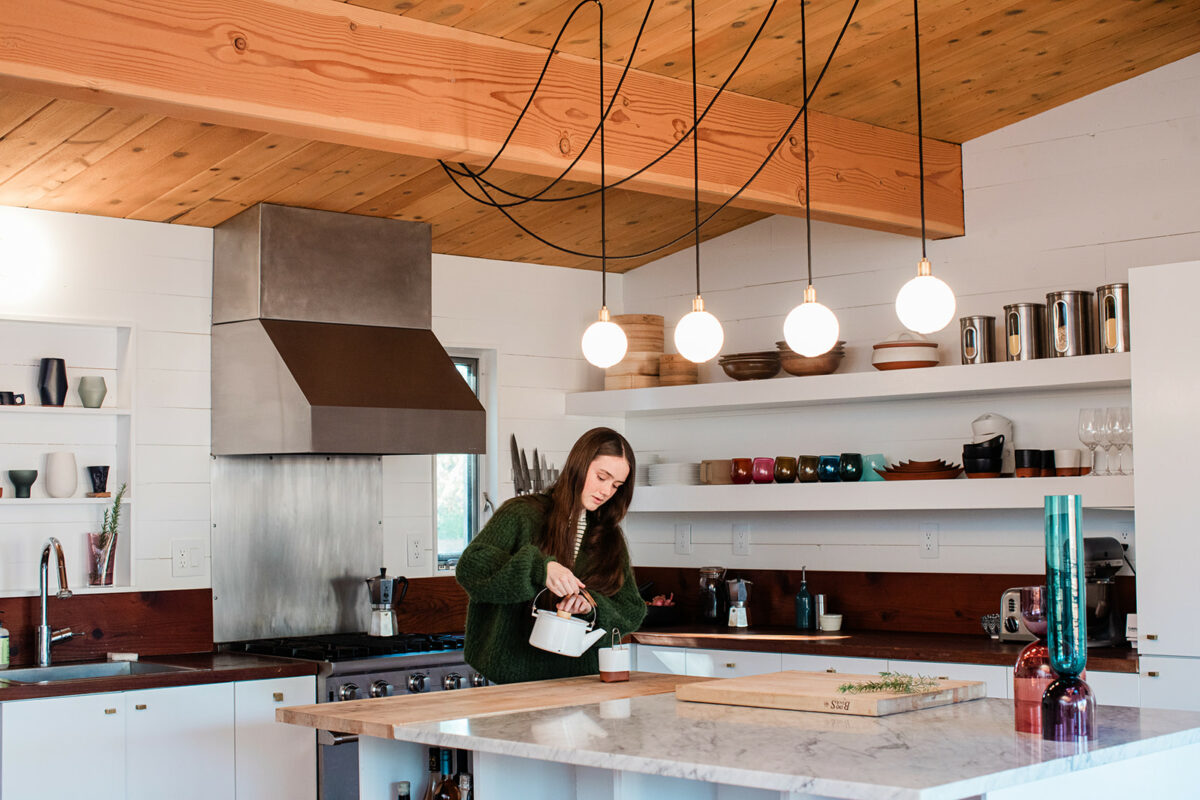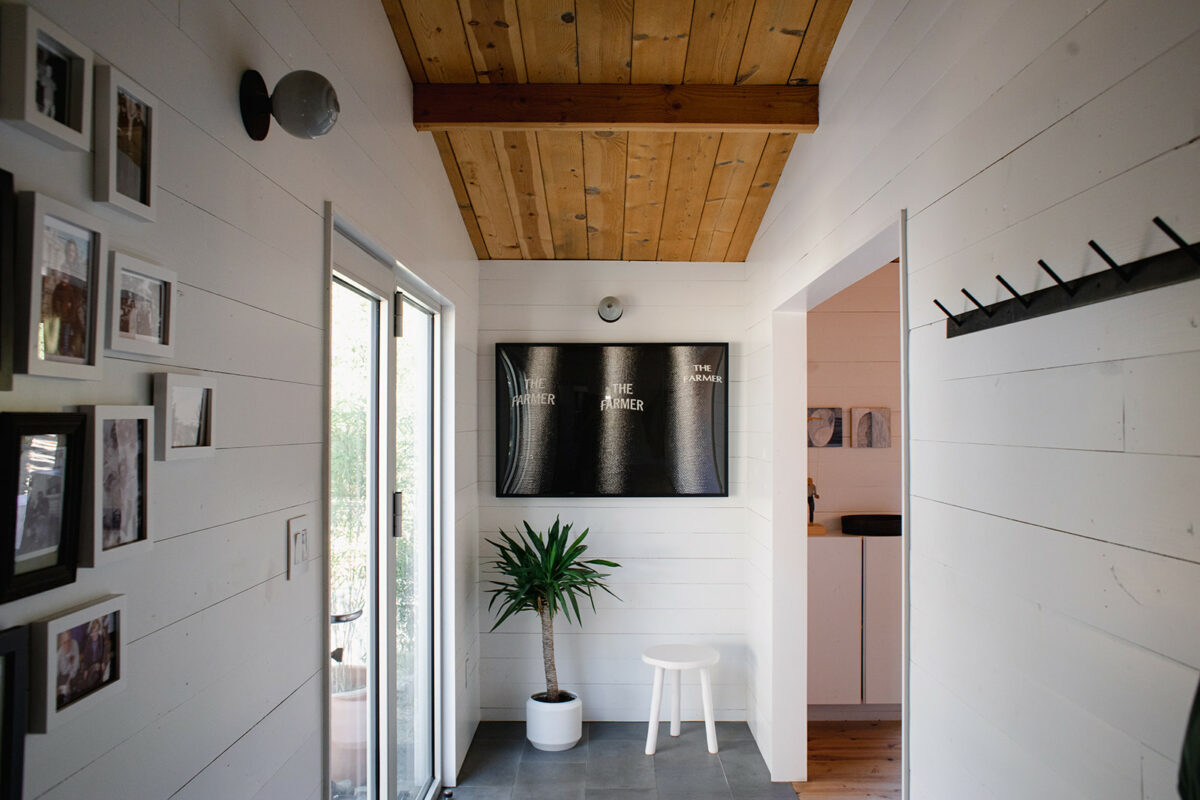Sometimes, as a designer, the hardest thing to do is to hold back. Paul Pavlak and Karen Gilbert, founders of SkLO, a Healdsburg-based company that produces handblown glass lighting and accessories, focused on restraint when designing the renovation of their 1,200-square-foot cabin-style home outside Sebastopol.
The couple shunned large additions and excessive ornamentation in favor of the humble, essential beauty of a smaller, cozier space marked by untreated redwood siding, stone slabs, and large glass windows to bring the outdoors in.
“It’s very warm,” explains Paul, who trained as an architect. “As an architectural point of view, and as people, we don’t want fussy stuff. We like things that are durable, things that will wear with you.”
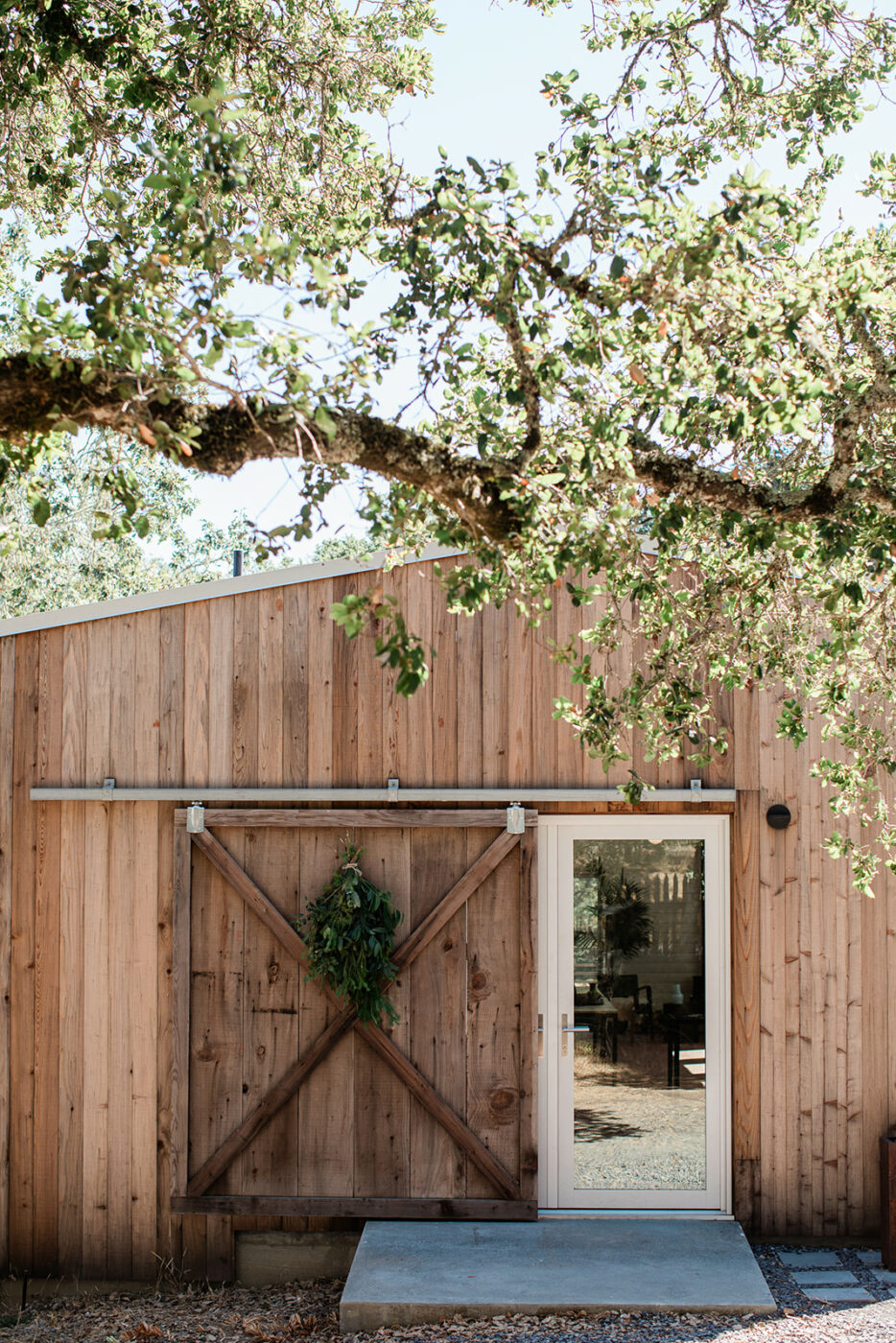
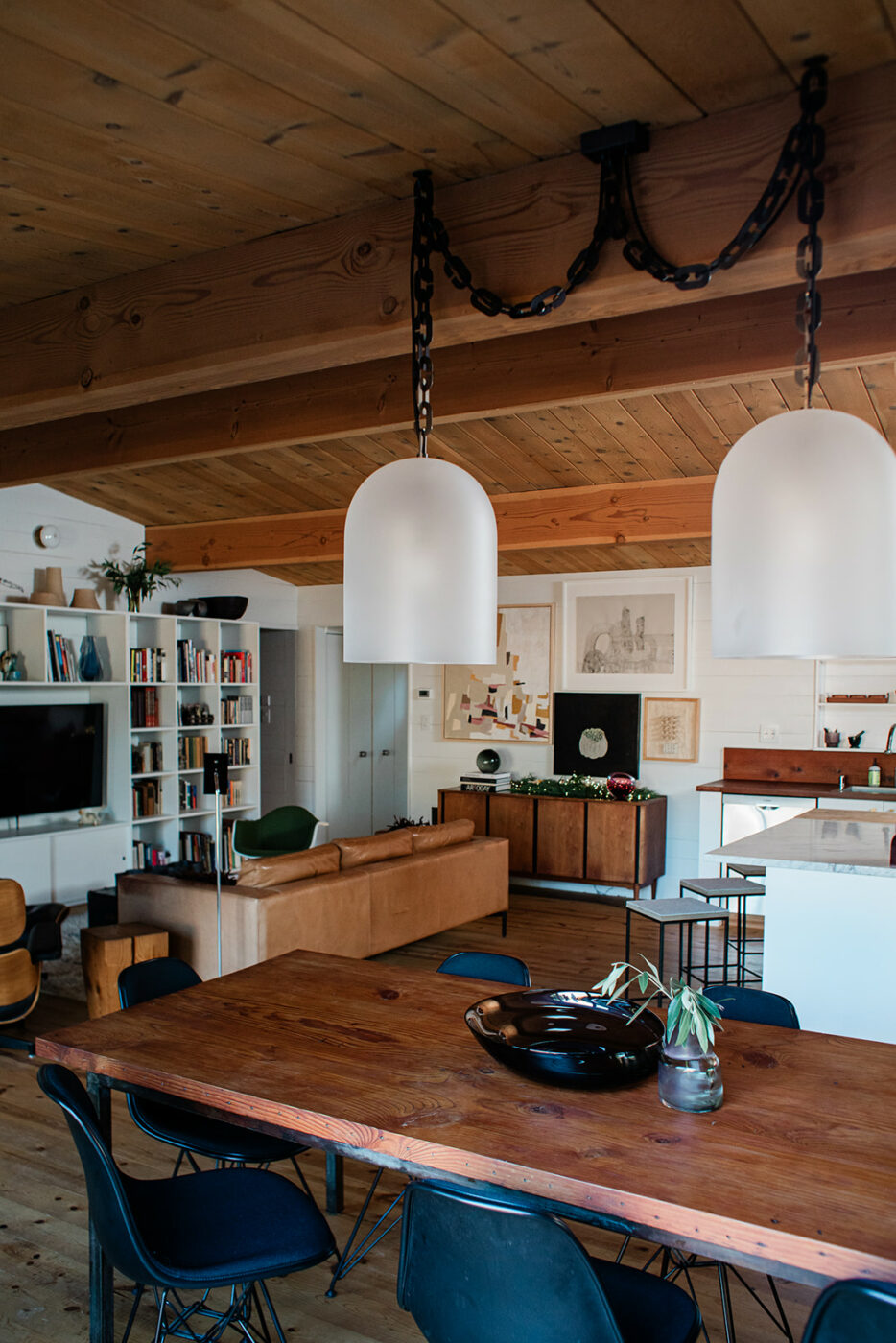
The couple’s daughter, Lola, now a sophomore in high school, was just a few months old when Paul and Karen bought the property, a 70s-era rancher and an adjacent outbuilding along a winding country road. The house was in fairly rough shape, with wall-to-wall shag carpeting, orange Formica counters in the kitchen, and a funky old circular fireplace that was the only source of heat. Oh, and there was a cat—an elderly, indoor-outdoor cat that had belonged to the original owners.
At the time, with their growing careers and a young child to raise, the couple didn’t have much of a budget for renovations. They painted inside, ripped out the carpet, and installed a makeshift kitchen, but other needed improvements, like a more functional bathroom and better insulation and heating, had to wait a few years.
“When Lola was little, I just remember getting up in the morning, and it would be like 46, 48 degrees in the house,” says Paul.
“You get pretty good at making a fire when you use it for your heat source every day,” laughs Karen. With Paul’s architecture training and Karen’s background in jewelry and product design, the couple never stopped picturing what would come next in the property’s evolution. When Lola was 10, they took on a much larger renovation of the space, moving into a single small bedroom as work began.
“Remember at the beginning of ‘Charlie and the Chocolate Factory,’ where everyone sits in the bed together? That was us. There was nowhere to be, but the bed. And Lola was still little enough that we could get away with that,” says Paul. His design added a mudroom and a half bath at the front of the house, a fully updated kitchen, and a new family bathroom. They also replaced doors and windows, added insulation and central heating, and traded the old fireplace for an economical European woodstove.
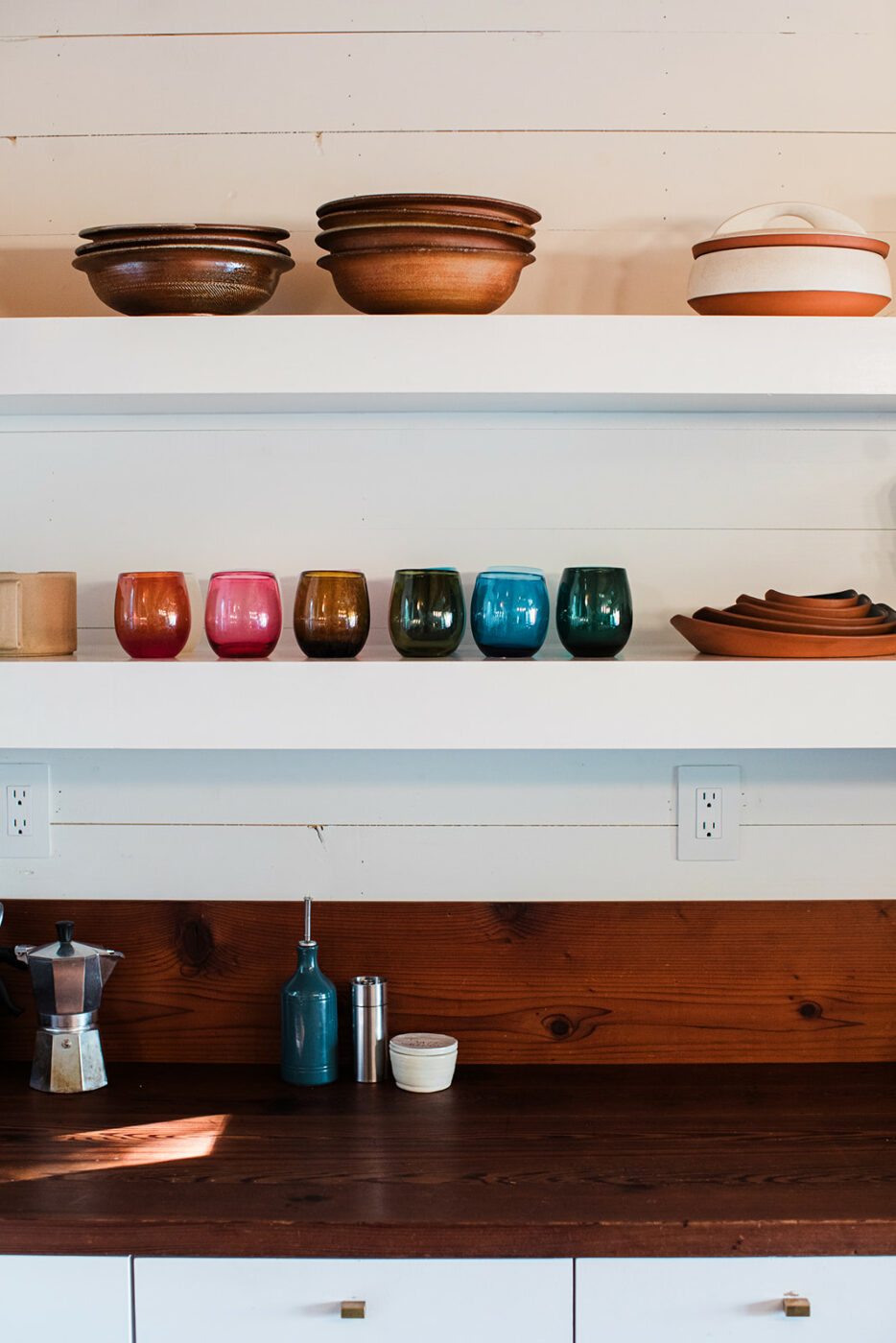
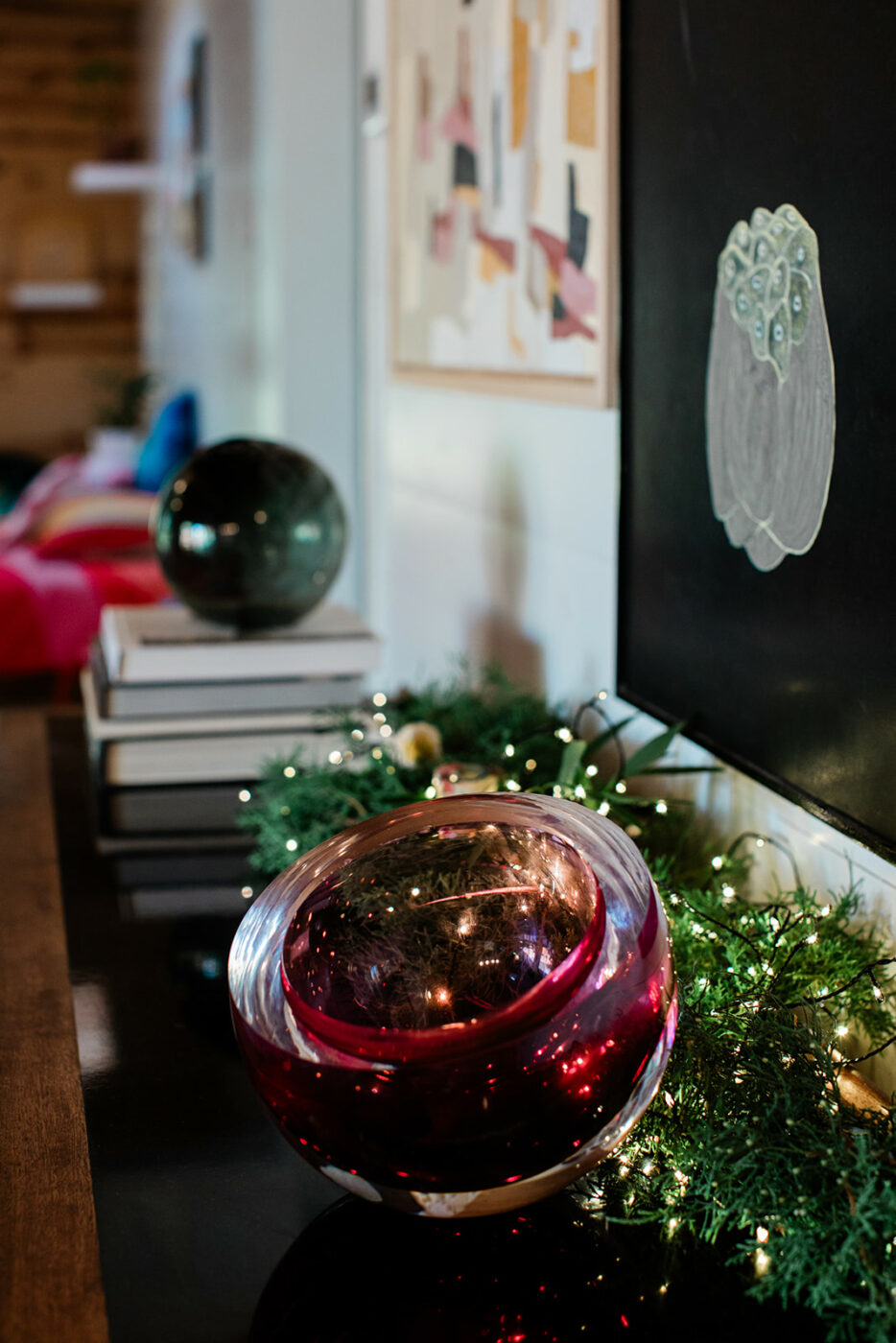
As they updated the layout and made the house more energy efficient, Paul and Karen focused on maintaining the pared-back simplicity that had drawn them to the home. Post-renovation, it still has a “just the facts, ma’am” feel, with a thoughtfully laid-out main room that combines a kitchen, dining area, and living spaces, plus two identical, modestly sized bedrooms just off the living room.
The couple chose redwood for the exterior siding, durable and inexpensive basalt stone floors in the new mudroom, and oiled redwood kitchen counters, inspired by ones they saw on a visit to Jack London’s turn-of-the-century cottage in Glen Ellen. The wood for the bathroom countertop is from their old dining table, studded with small touches of paint from Lola’s childhood art projects.
At every opportunity, Paul and Karen sought out the most honest expression of the materials they chose.
“I remember when the contractors were putting up the pine boards for the interior walls, which we’d repurposed from the old flooring. They were trying to figure out how to space the joints so they were all perfect, and one guy was trying to fill in all the old knots, so it would be seamless. And I was like, no—I want that texture, I want to see those knots. I want to see those old nail holes underneath the paint,” says Paul.
Intentionally, the redwood siding on the exterior is untreated, and the interior floors are treated simply with tung oil. There’s no drywall anywhere, no polyurethane sealants, no window coverings to separate the home from the outdoors.
“Everyone’s kind of obsessed with permanence,” says Paul. “But impermanence is part of the deal, for all of us. And we embraced that in building. The redwood—it is probably going to fail a little bit faster because we didn’t seal it, but it also would look different if we’d sealed it, right?”
Karen says she appreciates how the renovated space maintains the connection to the outdoors.
“That’s why it’s kind of like camping,” she says. “You’re very tied to the outside in all the seasons.”
When the weather is warm, the house opens up to the breezes, with skylights and sliding doors and various window configurations. And as winter approaches, the family can close off the windows and doors, or perhaps build a small fire on the weekend. (Even though the new wood stove is highly efficient, Paul is conscious of how often they use it, as the particulates in the smoke affect the environment.)
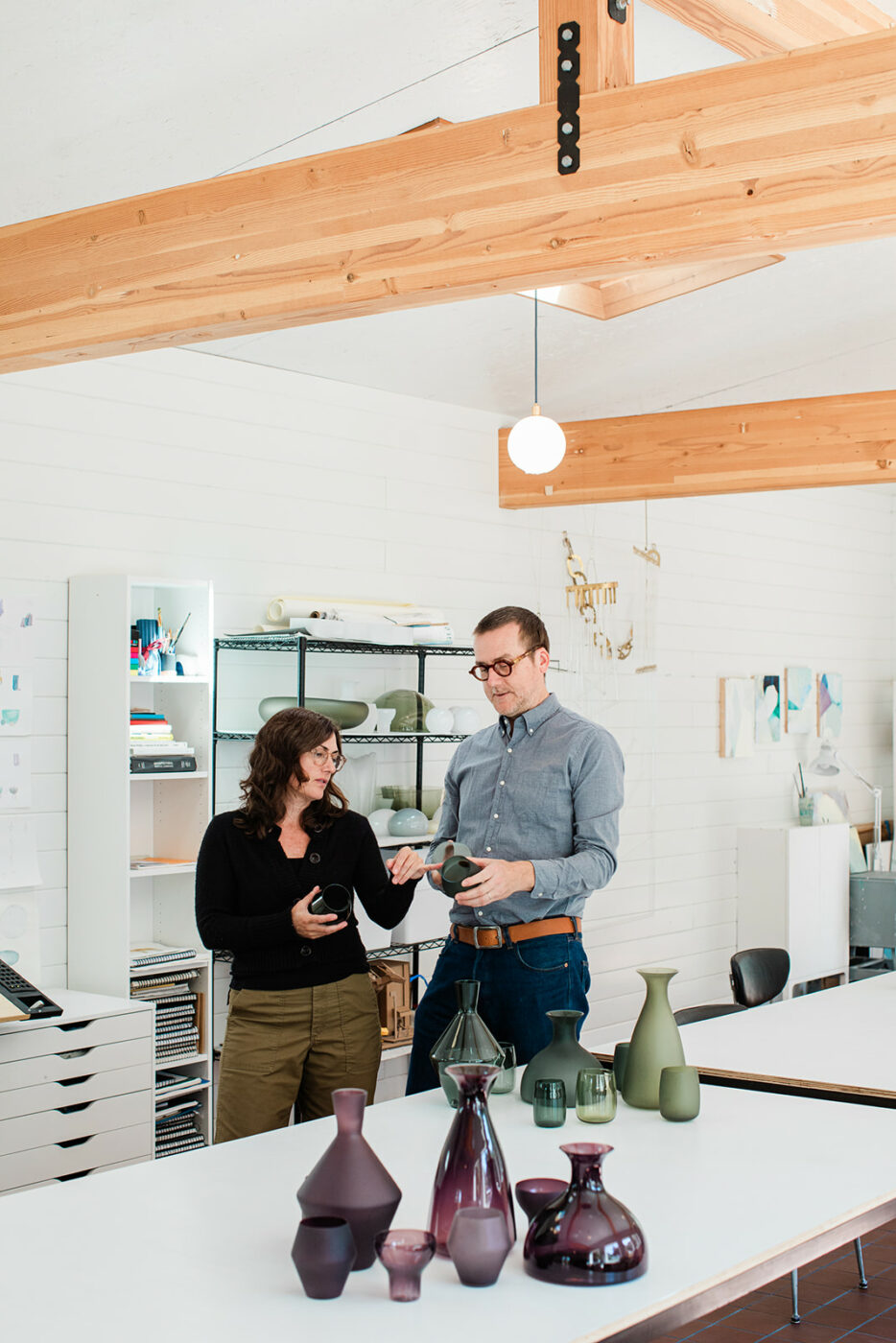
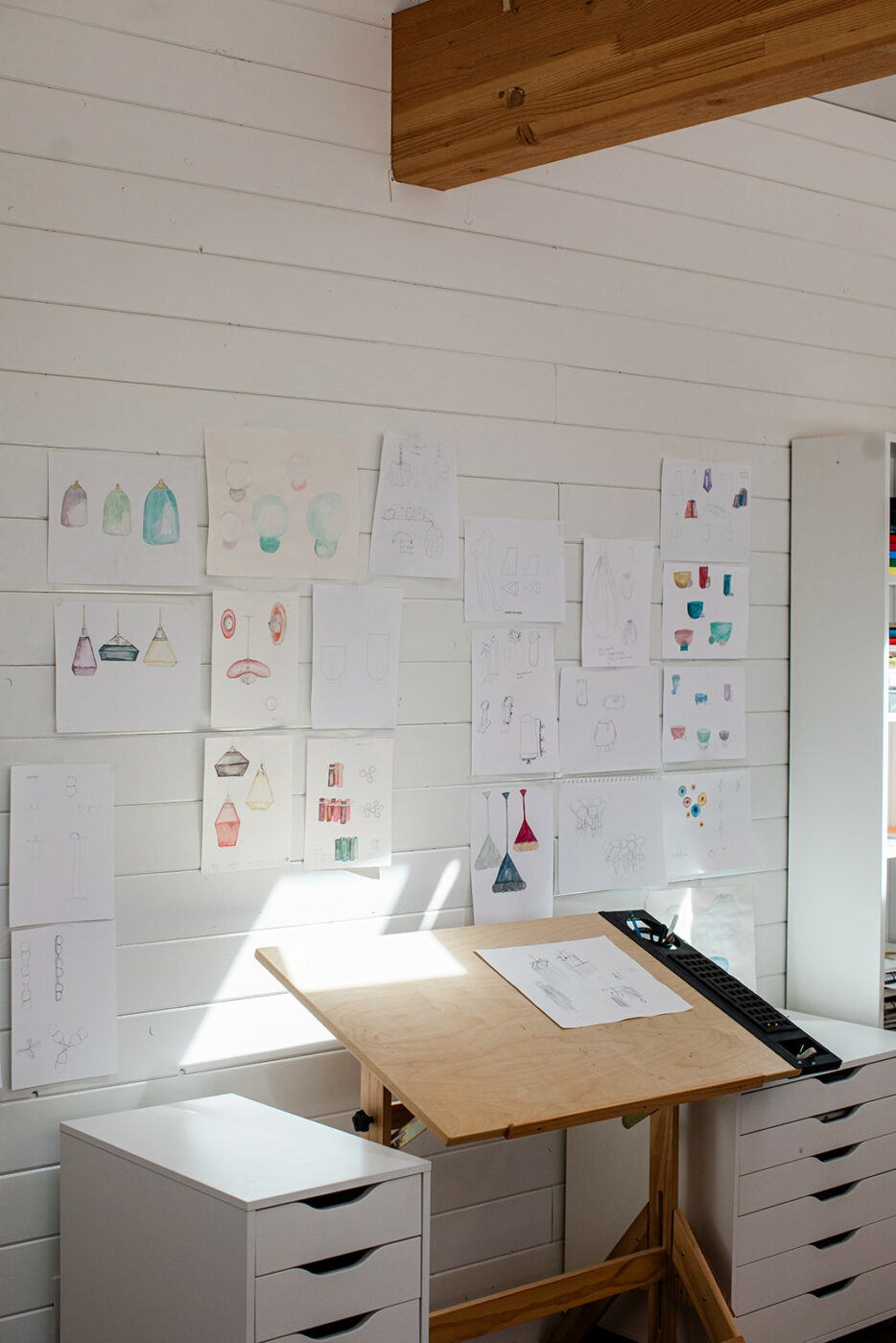
Paul and Karen are minimalists by nature and keep the common spaces neutral in tone, layering in color through books and art. While all the walls in the main space are painted white, Lola, who has grown up to be an artist and creative like her parents, wanted more color and vibrancy in her bedroom. She left the pine paneling in her bedroom in its raw form and chose a brightly colored bedspread.
The cabin feels cozier and quieter in early winter, as Lola sketches on her bed or at the kitchen counter and Karen works at the dining table.
“We’re very homebody people—we all kind of have our own inner world,” says Karen. “I make things, Paul cooks. We’re out in the country, so you don’t just go out for coffee. We make everything here.”
With the main home updated, the family turned their attention two years ago to a 1940s outbuilding, renovating it into a design studio and workspace for their business. The new studio is an unapologetically industrial space, with sturdy tile floors and big windows that look across the courtyard to the house and let in beautiful light to work by. One corner is given over to machinery and tools for Karen’s metalworking and jewelry, and there’s a large table at the center where she and Paul can spread out prototypes and work together on new designs.
SkLO’s lighting and accessories are designed by Karen and Paul in Sonoma County but are produced by artists at a glassblowing facility in the Czech Republic. “There’s this allure of being creative and working with a team of people in this ancient tradition,” says Karen. “Glassblowing is a craft—an ancient, living craft. Things are made exactly as they were 200, 300 years ago.”
The simplicity of the home in all of its seasons remains at the heart of what the family loves about living here. This time of year, there’s always someone in the kitchen, often heating up water for tea or starting a batch of soup. Lola puts on headphones and wanders under the oak trees, lost in an audiobook. They hear deer rustling in the leaves down by the creek, sometimes in the middle of the night. And the early winter light is especially resonant, pouring in through the windows to warm the home indoors and out.
“It’s one of the most beautiful times of the year,” says Karen. “You go somewhere else and it’s so gray all the time. We have entire weeks when it’s sunny—the sun is low and it’s still warm outside. That’s the real appeal, I think, of where we live.”
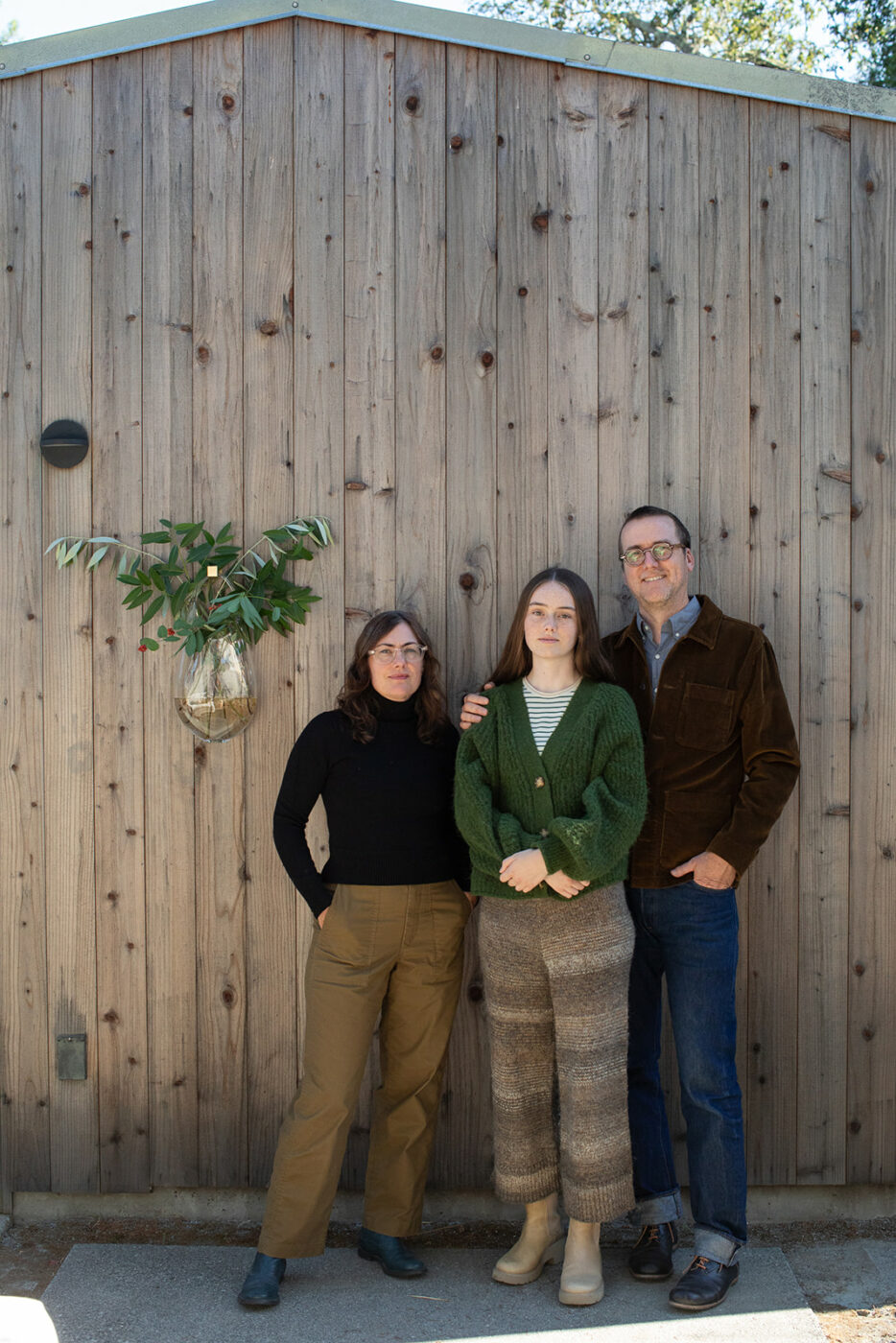
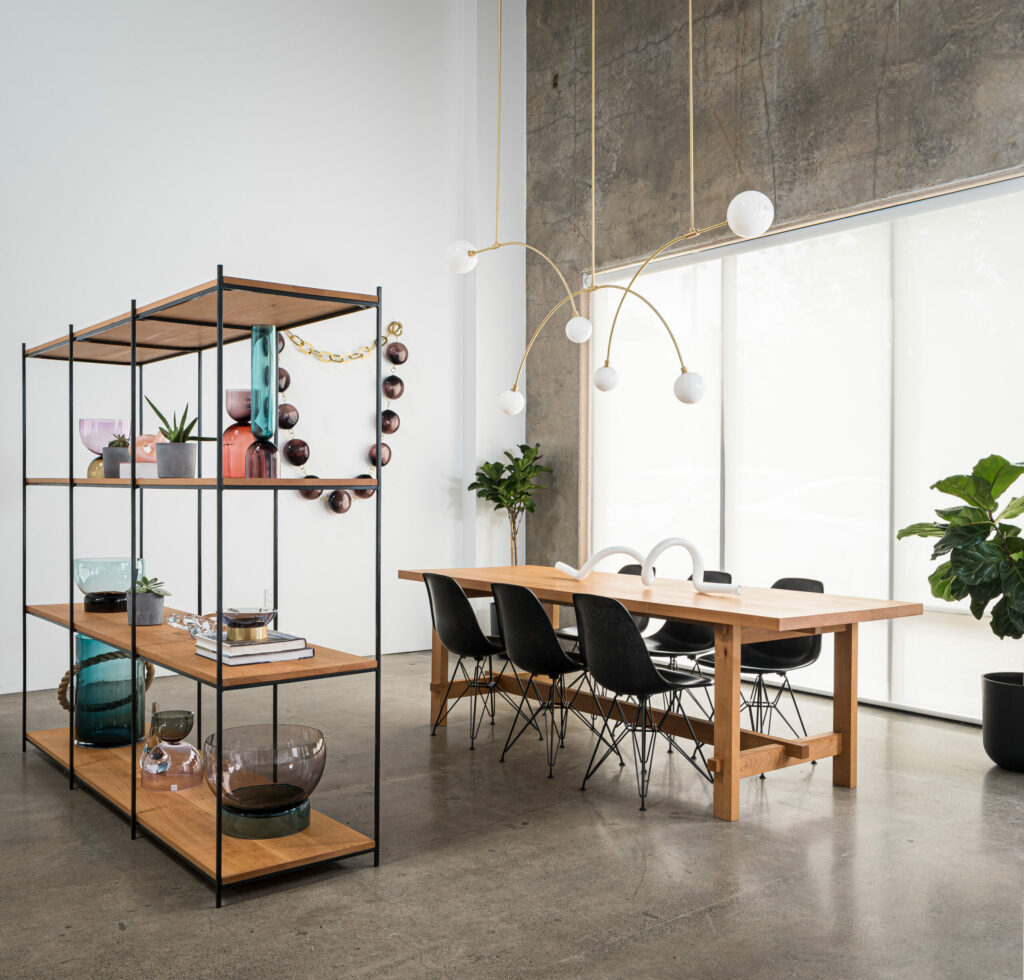
Building a Business
Karen Gilbert and Paul Pavlak founded SkLO 10 years ago with design partner Pavel Hanousek. The trio have a new trade showroom in Healdsburg, and their designs are produced at a glassblowing facility in the Czech Republic. As with Karen and Paul’s nearby home, the focus is on subtlety and process, paring back shapes to their essence while layering in vibrant color. Handblown pendant lights and sconces, jewel-colored vases and vessels, and elaborate glass-beaded wall art (a nod to Karen’s background in jewelry design) are staples of the lineup.
Early on, the three founders felt compelled to put every dollar they made straight back into each next project. But as they found their footing, the company expanded. This year the trio introduced beautiful fluted and frosted glass, and soon, they will add new furniture and tabletop accessories. “I feel like we’re finally making what we want to make, versus what we had to make,” says Karen. “You go through a phase in design where you’re just trying to put the pieces of the puzzle together and make something that people want. I think we’re finally at that phase where we have a language we can speak in.”
707-385-2101, sklo.com







